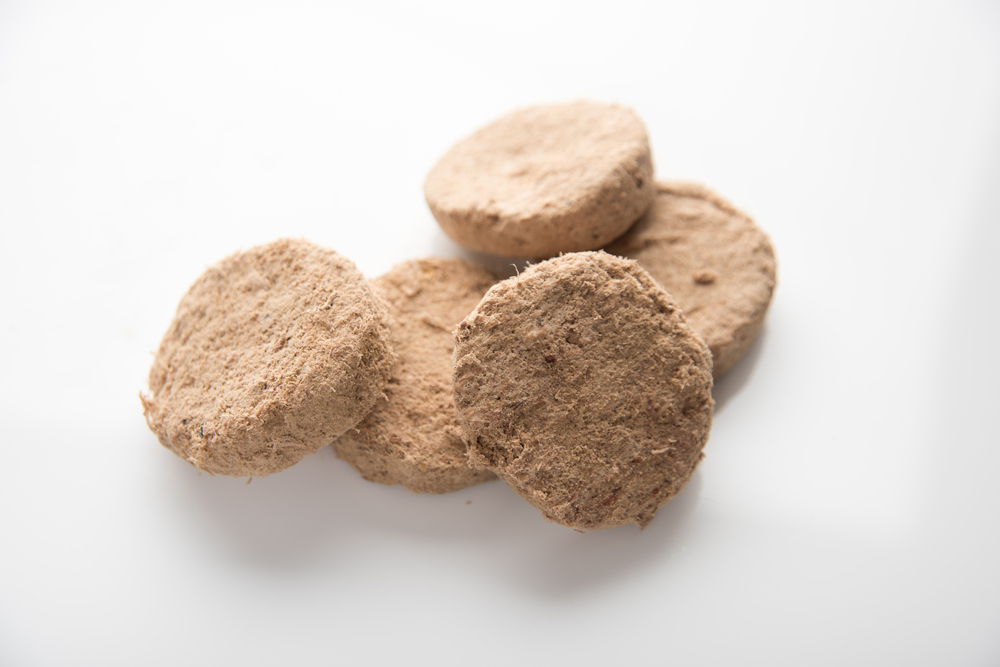
[ad_1]
When it comes to selecting the right food for your canine companion, two notable options are freeze-dried raw dog food and air-dried dog food. Each method of preservation and preparation brings its unique set of benefits, and understanding these can help you make an informed decision for your pet’s nutritional needs.
Freeze-Dried Raw Dog Food
Long Shelf Life: Freeze-dried dog food typically has a shelf life of at least a year, with some brands lasting up to five. However, once the package is opened, it usually needs to be used within a month, and some brands recommend refrigeration after opening.
Convenience: This food category is as convenient as kibble due to its shelf life that doesn’t require freezing, making it particularly useful for traveling with your dog.
Nutritional Integrity: Freeze-drying retains most of the nutrients in food, including proteins, amino acids, enzymes, fats, and probiotics, although vitamin C may be somewhat depleted. However, vitamin C deficiency is typically not a concern for dogs since they can synthesize their own.
Natural Composition: High-quality freeze-dried foods often include bone as a source of calcium and minerals, without the need for synthetic substitutes. Additionally, they tend to avoid unnecessary starches, aligning with a more natural diet for dogs1.
Cost: The cost of freeze-dried dog food can be relatively high due to the specialized equipment and lengthy process required. Prices can range from $30 to $50 for a 1 lb bag, with larger or bulk sizes offering some savings1.
Air-Dried Dog Food
Protein-Rich: Premium air-dried dog food provides over 70 percent protein, mixed with vegetables, fruits, and antioxidants, offering a balanced diet with high-quality, protein-focused nutrition without fillers.
Safety: The air-drying process kills pathogenic bacteria, making the food safer for consumption by both pets and humans.
Digestibility: Air-dried dog food is typically easier to digest than conventional kibble due to the gentle dehydration process that preserves nutrients and flavor while destroying germs
Overall Health Benefits: Quality air-dried dog food can contribute to a shiny coat, clear eyes, healthy teeth and gums, high energy levels, good focus, and optimal immunity in dogs
Cost: An example of the cost for air-dried dog food is a 40-ounce bag (roughly 2.5 pounds) priced at $75, or $59 per bag with a subscription. This type of food is denser than kibble, so less is required per feeding, which may offset the higher price point.
Frequently Asked Questions About Freeze-Dried Raw Dog Food vs. Air-Dried Dog Food
1. What is the main difference between freeze-dried and air-dried dog food?
Freeze-dried dog food is made by freezing the raw ingredients and then removing the moisture in a vacuum, which preserves the food’s nutrients and raw qualities. In contrast, air-dried dog food removes moisture through evaporation in a process that slightly cooks the food, which can decrease certain pathogens.
2. Is freeze-dried dog food considered raw?
Yes, freeze-dried dog food is considered raw because the freeze-drying process does not cook the food; it merely removes moisture, preserving the raw nutritional qualities of the ingredients.
3. Can freeze-dried dog food be the sole diet for my dog?
Freeze-dried dog food can be a complete diet if it’s balanced and formulated to meet all of a dog’s nutritional needs. It’s essential to choose a brand that is AAFCO-compliant for a complete and balanced diet.
4. How does the nutritional content compare between freeze-dried and air-dried dog food?
Freeze-dried dog food typically retains more of the raw ingredients’ nutrients, enzymes, and proteins due to the absence of heat in the drying process. Air-dried food may lose some nutrients due to the gentle heat, but it still retains more nutrients than traditional kibble.
5. Is air-dried dog food cooked?
Air-dried dog food is not cooked in the traditional sense; it undergoes a gentle drying process that uses warm air to remove moisture, which can slightly cook the food and reduce the presence of pathogens.
6. How long does freeze-dried dog food last after opening?
Once opened, freeze-dried dog food generally needs to be consumed within a month. Some manufacturers recommend refrigerating it after opening to maintain freshness.
7. Is air-dried dog food better than kibble?
Air-dried dog food is often considered better than kibble because it typically contains more protein and fewer fillers. It undergoes minimal processing, which helps preserve nutrients and flavor.
8. Does freeze-dried dog food need to be rehydrated?
While freeze-dried dog food can be fed dry, rehydrating it can aid in digestion and make it more palatable for some dogs. Always follow the feeding instructions provided by the manufacturer.
9. How do you store air-dried dog food?
Air-dried dog food should be stored in a cool, dry place. Ensure the bag is sealed properly after each use to maintain freshness and prevent spoilage.
10. Can I switch my dog from kibble to freeze-dried or air-dried food?
Transitioning your dog from kibble to freeze-dried or air-dried food should be done gradually to avoid digestive upset. Start by mixing a small amount of the new food with the old and slowly increase the proportion over time.
[ad_2]
Source link


Leave a Reply